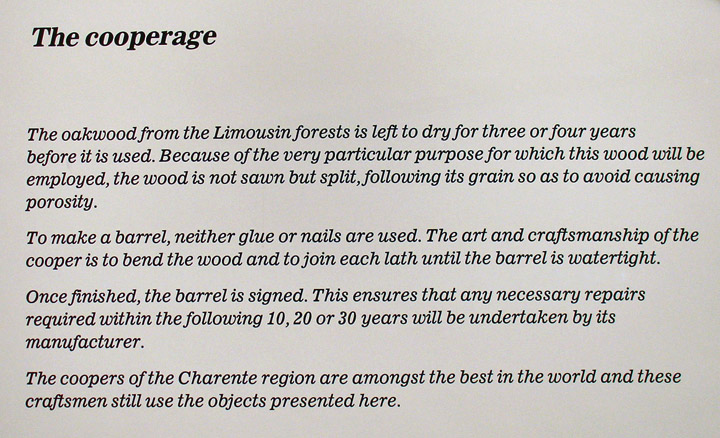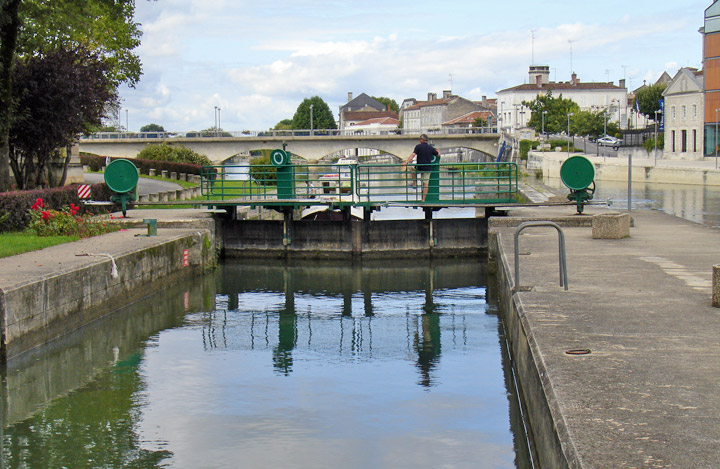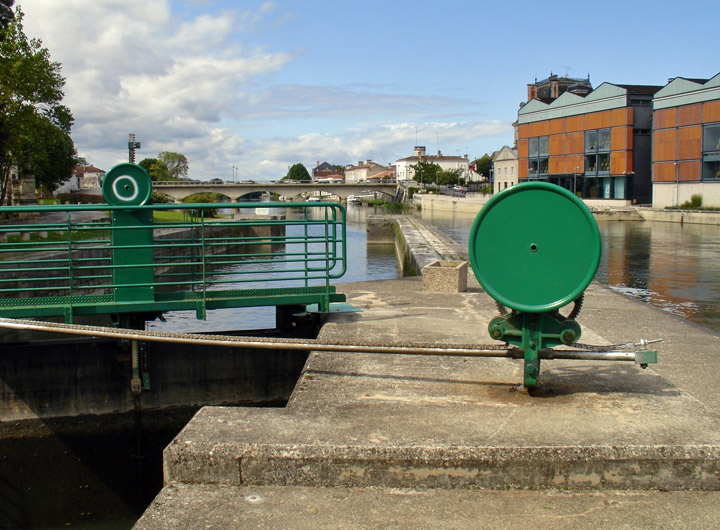

Cognac

grapes for Cognac production
Cognac, town in west central France,
in Charente Department, on the Charente River, in Angoumois. The leading
industry is the distillation of cognac, a famous brandy named for the town and
made here since the 18th century. Points of interest include a 12th-century
church and a castle built in the 15th and 16th centuries. Francis I of France
was born in Cognac in 1494. Population (1999) 19,534.

Brandy of Napoleon
Brandy, alcoholic beverage produced by the distillation of grape wine and matured by aging in wooden casks. When freshly distilled, the brandy is clear and colorless and will remain so if kept in glass containers. Placed in wooden casks, the spirits dissolve a coloring matter from the wood and acquire a light brownish tint, which dealers often deepen by adding burnt sugar. The distinctive aroma of brandy is due to the presence of traces of higher alcohols and volatile oils. The very high alcoholic content of the raw spirits is reduced somewhat by aging and is adjusted usually to 40 to 45 percent by dilution with water when the brandy is bottled for sale.

vintage laboratory equipment for the production of cognac
Perhaps the most famous brandy is cognac, named after a town in the wine-producing department of Charente, France. The amber-hued cognac is made by distilling white wine, which is then aged in an oak cask.
Jarnac

the town

the fountain

the Courvoisier facility
The origin of Courvoisier history goes back to the beginning of the 19th century with Emmanuel Courvoisier and his associate, Louis Gallois, running a wine and spirit merchant company, in the Parisian suburb of Bercy.

along the banks of the stream
In 1811 Napoleon visited their warehouses in Bercy and he was hosted by Louis Gallois, the Mayor, and Emmanuel Courvoisier. Legend has it that Napoleon I later took several barrels of cognac with him to St Helena, a treat much appreciated by the English officers on the ship who named it "The Cognac of Napoleon”.

warehouses in Jarnac
In 1843, the son of Emmanuel, Felix Courvoisier established the COURVOISIER in Jarnac in partnership with Jules Gallois. When Felix died in 1866, his nephews and associates – the Curlier brothers - took over the management of the COURVOISIER.

older warehouse
dark color is the algae feeding on the escaping alcohol vapors

newer warehouse

The Tour


traditional sill for making cognac

mechanical picking of grapes for cognac production

demonstration of the deep roots of the vines into the limestone soil

making the barrels


flaming the barrels to enhance the leaching of the ingredients from the wood

barrels for cognac aging



vintage bottles

premium product
COURVOISIER’s reputation as the finest cognac available, was again reinforced by
Napoleon III who granted COURVOISIER the title of "Official Supplier to the
Imperial Court" in 1869. This certificate is now on display at the COURVOISIER
museum in Jarnac, with many other Napoleonic artifacts and memorabilia.
In 1909, the English Simon family took over the COURVOISIER and started to build
the COURVOISIER brand identity and developed its global reputation. They
established the Napoleon silhouette and introduced in 1950, the Josephine
bottle, both of which are now recognized and renowned worldwide.
Napoleon Connection




the brandy of Napoleon


Locks at Jarnac

the stream

used for house boating

town across the stream from Jarnac

boat heading for the lock

the lock

the lock is to raise the water level to the level to that above the falls

the falls

opening the lock gate

turning the big wheel opens and closes the lock gate

boat entering the lock

tying up

gate closed to raise the water level

the boat rising in the lock as water enters from the higher level

Return to Grand European's Tour of France